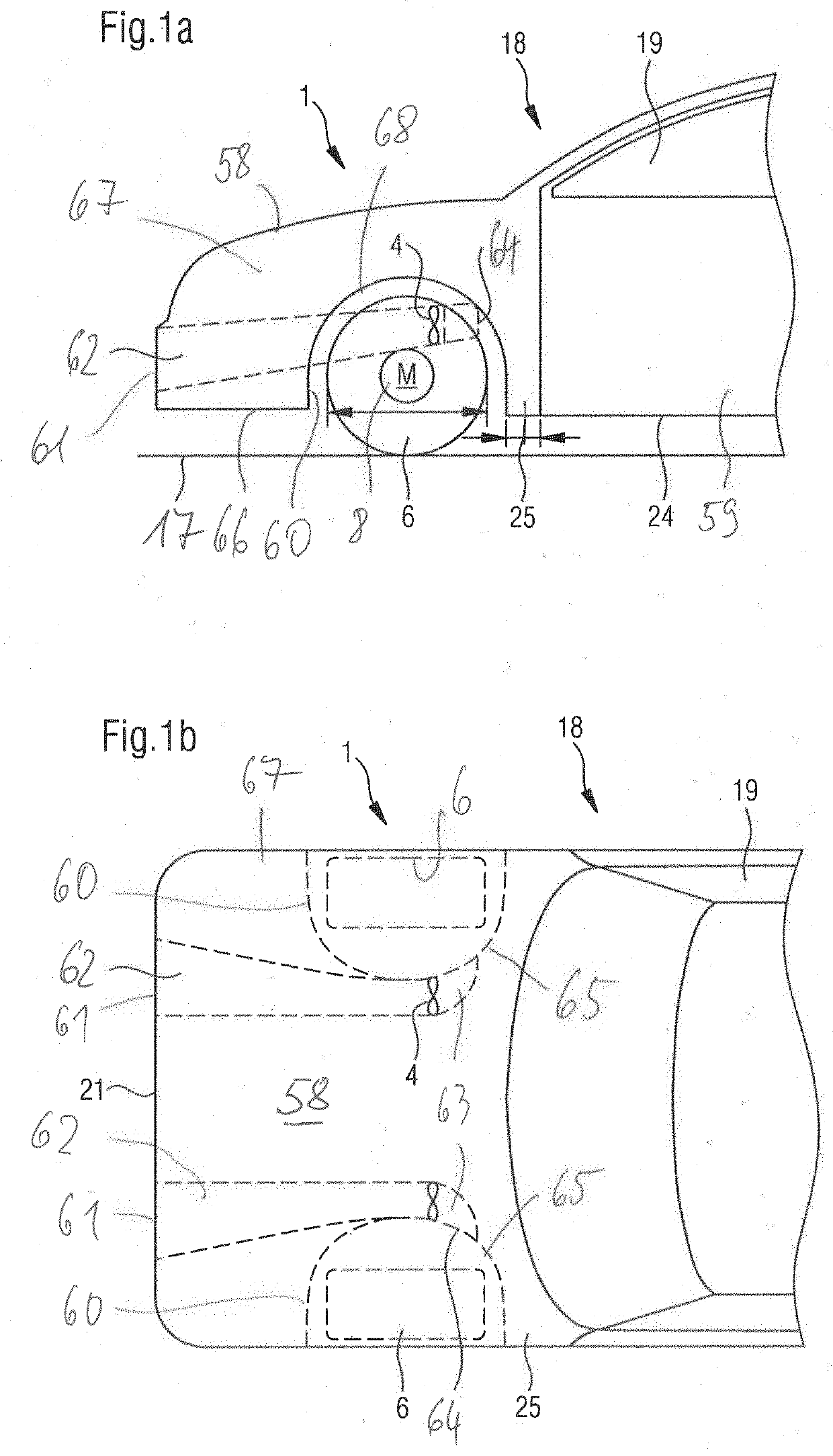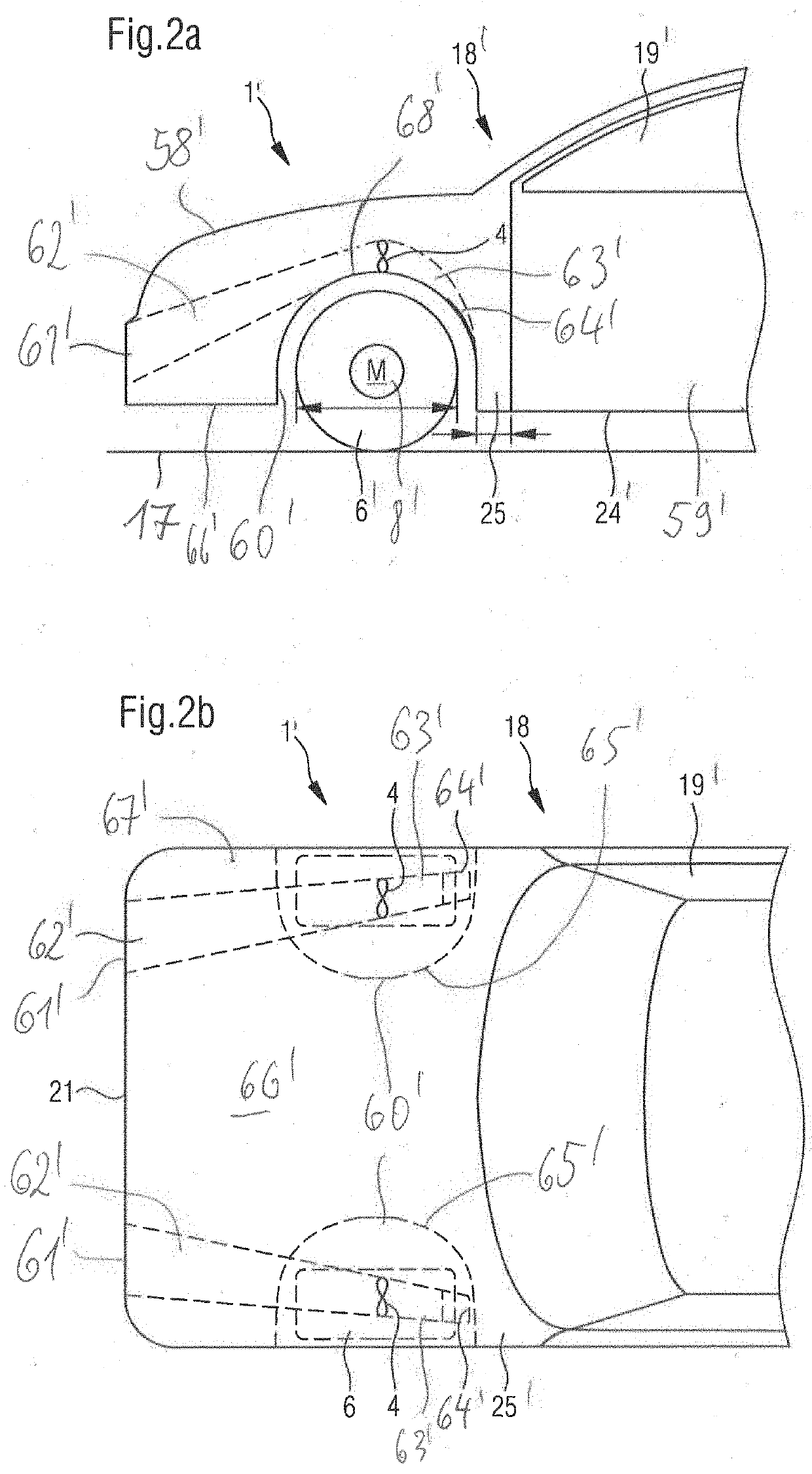Translationally movable wind power plant
a technology of wind power plant and wind turbine, which is applied in the direction of machines/engines, battery/cell propulsion, greenhouse gas reduction, etc., can solve the problems of a large amount of gathered energy, a high fuel consumption of road vehicles, and a sporadic flow of air in many areas, so as to reduce turbulence, improve the yield of produced electrical energy, and reduce the effect of pressur
- Summary
- Abstract
- Description
- Claims
- Application Information
AI Technical Summary
Benefits of technology
Problems solved by technology
Method used
Image
Examples
Embodiment Construction
[0084]As can be seen in the drawing, the wind generator 1, 1′, 1(3), 1(4) is situated onboard a vehicle 18 that is suitable for roadway travel, whereby this vehicle 18 is able to generate current from its kinetic energy, for example during a braking operation. For this purpose, such a wind generator 1, 1′, 1(3) is preferably situated within the vehicle body 25, for example beneath the hood 58, and therefore has no negative effect on the air resistance of the road vehicle 18.
[0085]The wind generator 1, 1′, 1(3) may be permanently active, or, when necessary, may be switched on as soon as excess kinetic energy is available, such as during a braking operation or during downhill travel. For this purpose, the wind generator 1, 1′, 1(3) may be concealed behind a streamlined cowling which may be opened as needed, but which can be closed during acceleration operations or if a maximum travel speed is desired, in order not to generate any air resistance.
[0086]FIG. 1a shows the wind power plant...
PUM
 Login to View More
Login to View More Abstract
Description
Claims
Application Information
 Login to View More
Login to View More - R&D
- Intellectual Property
- Life Sciences
- Materials
- Tech Scout
- Unparalleled Data Quality
- Higher Quality Content
- 60% Fewer Hallucinations
Browse by: Latest US Patents, China's latest patents, Technical Efficacy Thesaurus, Application Domain, Technology Topic, Popular Technical Reports.
© 2025 PatSnap. All rights reserved.Legal|Privacy policy|Modern Slavery Act Transparency Statement|Sitemap|About US| Contact US: help@patsnap.com



